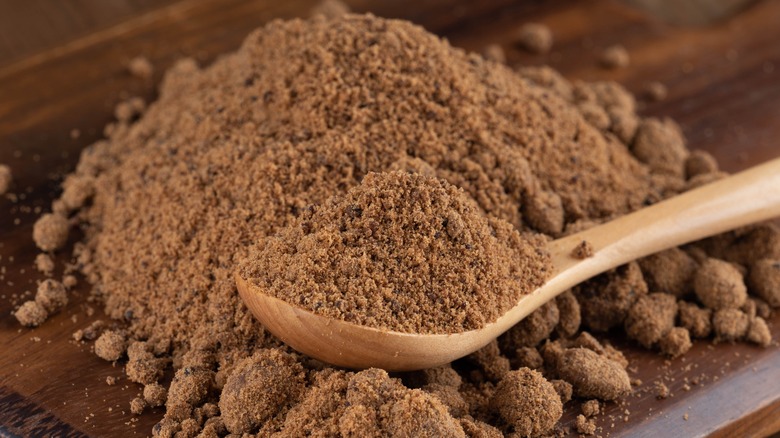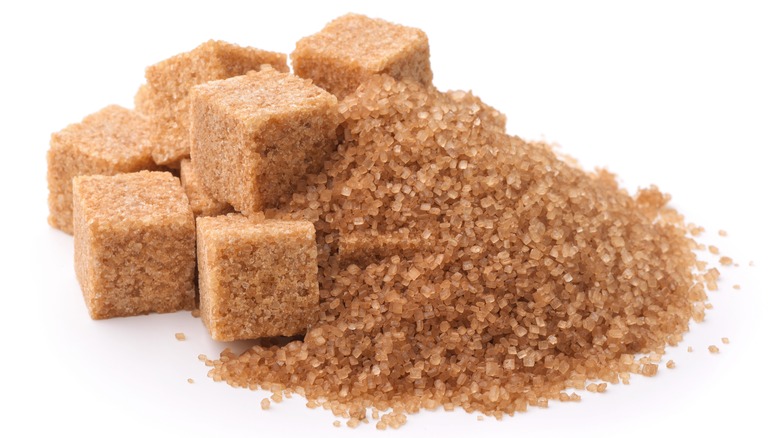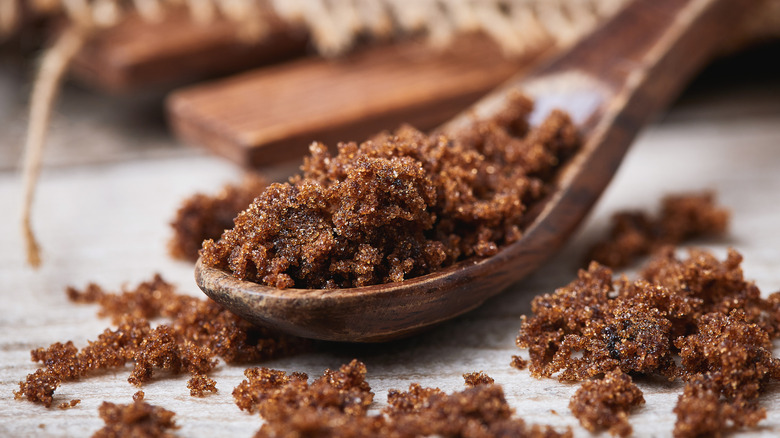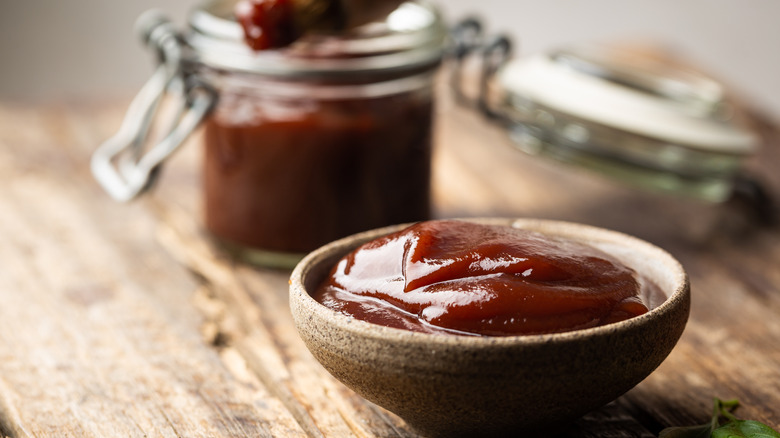Brown Sugar Vs Muscovado Sugar: What's The Difference?
Sugar can be made from sugar cane and sugar beets, both of which are grown in tropical climates, according to Healthline. The first step in the sugar-making process is extracting the juice from both plants, then purifying and heating it until molasses — a thick, brown syrup — is formed. The molasses is then placed in a centrifuge, where the sugar crystals separate from the molasses. The sugar crystals are refined even more into small granules to ensure the molasses is gone; this product is known as white granulated sugar.
According to Food Insight, sugar cane and sugar beets are also grown throughout the United States. Minnesota, Idaho, North Dakota, and Michigan produce the most sugar beets, and southern Texas, the Mississippi Delta region of Louisiana, and southern Florida make the most sugar cane. With the straightforward processing of just two plants, you'd be surprised to know that many different types of sugars exist. Per BBC Good Food, these include granulated, caster, icing, golden caster, raw, brown, and muscovado — but that's only scratching the surface. The last two take on the same appearance and have similar production methods, but several differences still remain.
Brown sugar contains less molasses and has a mild toffee flavor
Brown sugar is created in several ways, with its key ingredient molasses separating it from white sugar, per Food Insight. After white sugar is refined and processed, molasses syrup is added back to the remaining sugar crystals to form brown sugar. Another method is simply using molasses to coat white sugar granules. Brown sugar can be either light or dark and soft or coarse, depending on how much molasses the sugar has — the more molasses, the darker.
The molasses used for brown sugar only comes from sugar cane. While certain liquid sugars are combinations of the monosaccharides fructose and glucose, solid sugars, including brown sugar, are made of the disaccharide sucrose, which is created with equal amounts of fructose and glucose. The average brown sugar has around 85% sucrose. Brown sugar is nutritionally similar to white sugar except for having slightly more iron, calcium, and potassium (via Healthline).
Muscovado is an artisanal sugar with more molasses and a stronger flavor
According to Healthline, muscovado sugar is similar to brown sugar, with juice extracted from sugar cane as the first step. Next, lime is added to the sugar cane juice and cooked until all of the liquid has evaporated. This mixture is then cooled until sugar crystals form. During the cooking process, molasses is made and left in with the sugar crystals, whereas the two substances are spun in a centrifuge and separated when making brown sugar. The final product is, alas, muscovado sugar, which resembles wet sand and, of course, brown sugar.
Muscovado sugar also goes by khand, khandsari, or Barbados sugar. It is frequently classified as an artisanal sugar because of its laborious process and the less advanced equipment used to make it. Because muscovado sugar has higher concentrations of molasses, it contains a bit more nutrients than brown sugar. Small amounts of iron, calcium, potassium, and magnesium are found along with a few antioxidants such as gallic acid and polyphenols.
Brown and muscovado sugar make perfect substitutes for each other
Muscovado sugar is almost the perfect substitute for brown. Per Tarladalal, brown sugar has a rich caramel or toffee flavor and is incorporated into dense baked goods such as cookies, zucchini bread, chocolate cake, and fruit cake. It's also ideal for sauces and glazes, including barbecue sauce. Because brown sugar doesn't contain as much molasses, its taste will be somewhat milder.
Muscovado has a deep toffee taste with complementary notes of a burnt flavor, according to Very Well Fit. This makes muscovado sugar great for sprinkling atop oatmeal, ice cream, and even popcorn as a salty-sweet snack. It's also perfect for making caramel, toffee, gingerbread, and decadent baked goods like brownies. Because of its smokiness, it adds dimension to concocting a barbeque sauce, glaze, or meat marinade. Just when you thought it stopped there — it can also be used in salad dressings and as a sweetener in hot coffee.



